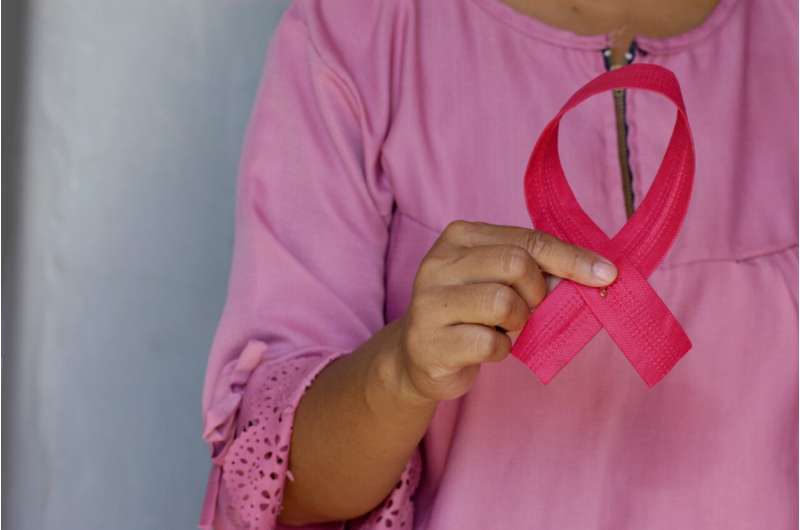This article has been reviewed according to Science X's editorial process and policies. Editors have highlighted the following attributes while ensuring the content's credibility:
fact-checked
peer-reviewed publication
proofread
Study finds women with higher out-of-pocket costs receive fewer follow-up procedures to screening mammograms

Out-of-pocket costs for screening mammography have been mostly eliminated for women over 40 years old, but not for any needed follow-up procedures or testing if a screening mammogram is abnormal. A study by the Neiman Health Policy institute published in JAMA Network Open found that higher out-of-pocket costs is associated with lower utilization of subsequent diagnostic imaging.
The Neiman Institute study analyzed 230,845 women who had a screening mammogram over a three-year period. These women were covered by 22,828 distinct commercial and Medicare Advantage insurance plans that were categorized as plans with co-pays, co-insurance, deductibles, or relatively balanced across the three cost-share components.
Deductible and co-pay plans were associated with the highest out-of-pocket costs, $1186 and $1120 respectively, while co-insurance plans had the lowest. Women underwent significantly fewer subsequent breast imaging procedures in dominantly copay and dominantly deductible plans relative to co-insurance plans.
"While eliminating cost sharing for breast cancer screening was an important step in health policy, if women who have an abnormal mammogram don't follow through with diagnostic tests due to cost, then the policy hasn't gone far enough to support early cancer detection and improve outcomes equitably," said Geraldine McGinty, MD, MBA, FACR, of Weill Cornell Medicine and senior author on the paper.
The researchers also looked specifically at different types of follow up tests, including diagnostic mammograms, ultrasound, MRI and biopsy. Among these, follow up by breast MRI was less likely to be provided in all higher cost-sharing plans, and breast biopsy was the least impacted.
"Our results are startling considering the risk posed by an unconfirmed positive mammogram result," said Danny Hughes, Ph.D., of Arizona State University who led the design and analytics of the study. "Additional policy changes such as removing cost-sharing for subsequent tests after abnormal screening results or bundling all breast cancer diagnostic testing with screening mammograms into a single payment may provide avenues to mitigate these financial barriers to care and improve breast cancer outcomes."
More information: Danny R. Hughes et al, Patient Cost-Sharing and Utilization of Breast Cancer Diagnostic Imaging by Patients Undergoing Subsequent Testing After a Screening Mammogram, JAMA Network Open (2023). DOI: 10.1001/jamanetworkopen.2023.4893




















